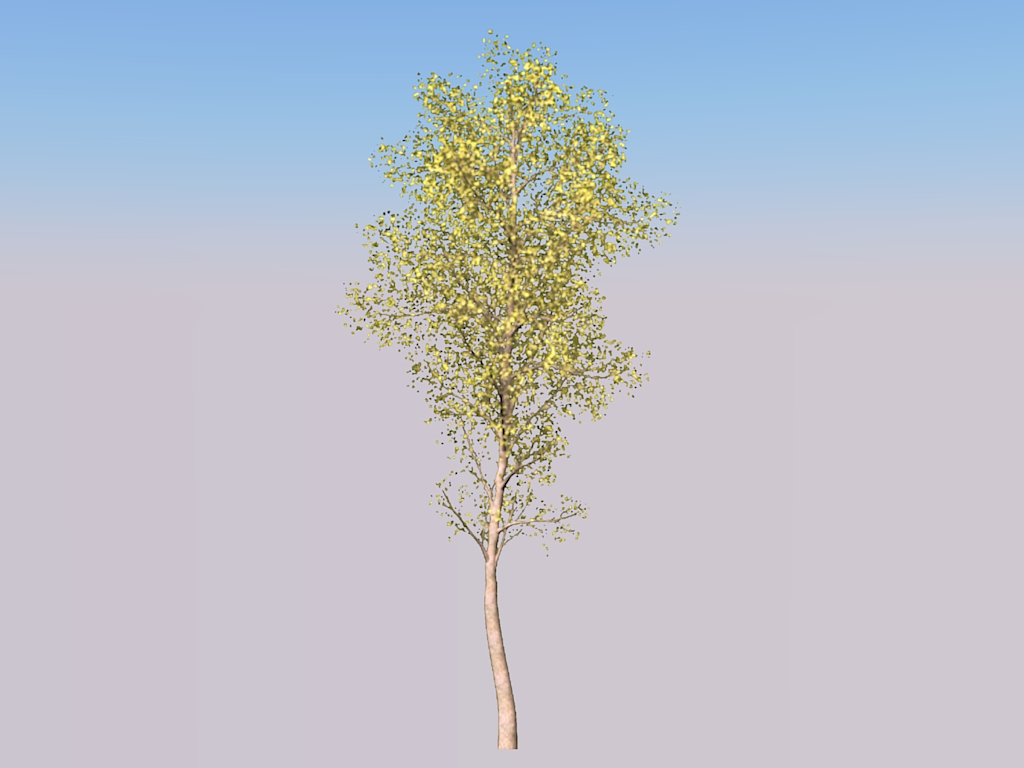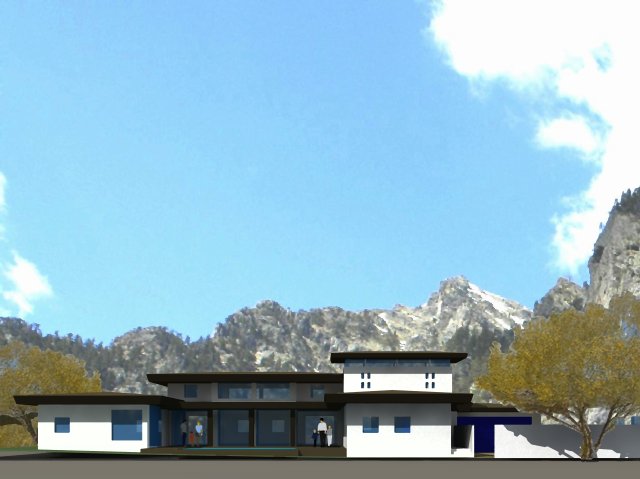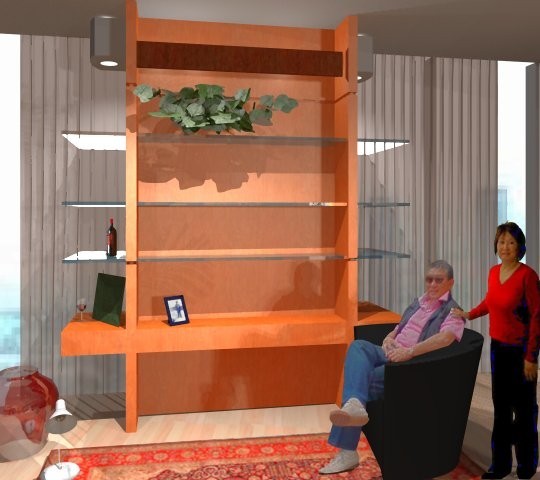Podium VS IDX Renditioner VS Twilight. Which To Buy?
-
Thanks for the info!
Ok, based on your replies, my recommendation is:-
Before entering the rendering world, learn as much of SketchUp as you can. My first stop would be the official videos:
http://sketchup.google.com/training/videos.html
Start with the "New to Google SketchUp" ones. Back in January, I watched them all (the new to sketchup ones) and made all the exercises in one or two days. Before this, I had tried to learn SketchUp by myself several times but found it puzzling. Take a weekend off for this if needed. Pay special attention to the lesson on how to work with materials. Watching these videos will help you avoid making tons of mistakes in the future. Also, having learned to model properly in SketchUp will be a great help when you start rendering. Trying to learn both at the same time is the perfect recipe for frustration. -
Learn all you can about image manipulation. If you don't already have an image editor like Photoshop, download the free GIMP. Whatever you use, learn to use it for creating and editing seamless textures for your SketchUp models, and also try making some basic photomontages with your models. By trial and error, try to fully absorb concepts such as pixels, megapixels and dpi, learn to choose colors via RGB and HSB, and more, to apply some filters and effects, and to manipulate color levels and color curves. This knowledge will prove priceless in the next step.
Before the next step, try learning some general stuff about rendering. Start by watching the "making of" documentaries in Pixar DVDs or in Shrek's DVD.
- Once you have some SketchUp and Image manipulation experience under your belt (should take a month) and since you say you have no deadlines and you're ding this as a hobby, I would recommend to start playing with all program demos you can until you find the one that "clicks".
[Edited to remove all references to specific renderers]
-
-
I've tried all three (limited use with podium admittedly) and my opinion is that IDX is a fantastic renderer if you need quick relatively high quality renders. It has many light options, and makes it very easy to create custom light fixtures and customize materials directly within Sketchup. What I found is that straight out of the box I could make clean crisp interior renderings with 15 minute render times. See below.
That said, if you're looking at getting better at rendering over time, doing animations, or don't have tight deadlines, then Twilight renderer is your choice for integrated rendering. With a little more tweaking and a little more time I'm confident you could produce some top quality images AND animations. Last I checked it was half the price of IDX and Podium too. Twilight has A LOT of options and an easy interface.
My company went with IDX for the speed and quality and I'm quite satisfied.

-
IDX is indeed very fast and can be easily set up - however there is one thing I am missing in it; the lack of alpha transparency support. A 2D Face me plant would look like this when rendered:

Instead of something like this:
Hopefully it will be fixed soon as William Manning, developer (and a good fellow member here), said this is something they are working on. For interior design, this is of course not that big of a deal anyway - it's rather a flaw for exteriors and landscape designers.As I have just checked, there is a discount on IDX at the moment and it is below $100 now, too.
http://www.idx-design.com/IDX/IDXRenditioner/tabid/709/Default.aspx -
I agree with Richat and I, too, like nXtRender which has an interface that is similar to Podium as it is very simple to use and you can have a very large rendersize... the great thing here is that if you upgrade to the more powerful IRender nXt you won't have to do anything to the existing models. All the parameters you set up in nXt Render will transfer over to the new software because they are saved with the model. And they both use the same rendering engine.
The thing to note here is no matter which one you choose, realise that the renderer uses the power of your CPU and NOT the graphics card. So a dual core (sometimes called threads) CPU will not render as quickly as one that has 4. But, this is only applicable if the software (the rendering software, that is) is multi-core friendly.
In most cases you can try most of these out for 30 days and find out which one works for you.

-
Gai, That's not really fair is it? I could be wrong, but my recollection is that as far as alpha support, IDX renders everything that SU can display. Will SU display your example of a 2d face-me tree? Still, having alpha support beyond SU can be a asset at times. Anyway, my apologies if I am mistaken.
Not a good example of a render (I did this with IDX out of the box), but note the 2d face-me trees.
"Black Art" indeed:-)

-
Hm. Then what am I doing wrong?
Are your trees really cut out in SU (like outlines traced and such)? -
-
Those trees I downloaded from Google, attached is a IDX render with 2d face-me people that I cut out in SU.

-
Actually Gaieus is right: IDX Renditioner doesn't support a true alpha transparency .png material. You've just found a work-around that's good for you.
Unfortunately our development team had been sidelined on some other projects, DoubleCAD in particular, otherwise we'd have had a version out with Alpha transparency a long time ago.
It's coming, along with other bells and whistles, but I don't have a firm date yet.
And you're right: we do have a half off special on the web site for the month of December. Thanks for mentioning it.
-- William
-
Hi William
Really looking forward to that new version! Hope you1ll be able to release it soon - although DoubleCAD has also proved very useful (both for me and many others) so I could now not really decide which development to support.

-
Guess I don't really know what alpha support really is. When I cutout the background in my 2d-face me people, exactly what am I doing? What ever it is, it renders OK. Can anyone explain it to me?
-
Your basically just creating a person shaped face in SU which conveniently already has a texture applied to it. When a renderer renders an image with alpha transparency (as with twilight) it is using information already in the image to sort of cut it put for you. Just a matter of convenience really.
-
The ability to use simple (rectangular) faces as Face me components and apply textures with transparent background has the obvious advantages that
- you need not hassle with tracing them around in SU
- eventually you end up with MUCH less geometry in your model.
True that there is one big disadvantage; SU - although can recognise image based transparency - cannot get it to work with shadows so you will end up with an ugly, rectangular shadow for every such component (or you turn them casting shadows off completely).
But even in this case, some low-poly, dummy shadow-casting piece would be enough for a "rough" shadow.
-
In term of speed rendering Podium versus IDX?
I have seen video of IDX : seems very speedy ?
[flash=425,344:galk7a1w]http://www.youtube.com/v/pOia4-lFX70&hl=fr_FR&fs=1[/flash:galk7a1w]
[flash=425,344:galk7a1w]http://www.youtube.com/v/UMdMkKLaLp0&hl=fr_FR&fs=1[/flash:galk7a1w] -
I will definitely recommend podium it easy to use.. an still wait perhaps for the Podium V2.. sepo's sample Beta render in the gallery is very respectable.
-
There is an advantage in getting Podium 1.7.1 now as there will be small upgrade price to V2....so you end up with 2 distinct rendering software.
-
align,
it depends a lot on what your intentions and occupation are. if you are an architect or designer, hence the focus of your work is the design, you would be better off with one of the applications that demand a short learning curve and that are easy to operate. i am talking of podium, twilight, irender, kerkythea, idx renditioner, indigo, pov-ray, etc. however, if you are an ilustrator or work in the visualization field, you might want more control to achieve super-hyper-realism. then it is probably worth – i say probably as you can achieve exceptional results with any of the apps i just mentioned – having a go at the likes of vray, maxwell, modo and others of the same caliber.
but never forget solo's wise warning: rendering is at best 50% to do with the app you use. the rest is up to the artist in charge.
Advertisement








